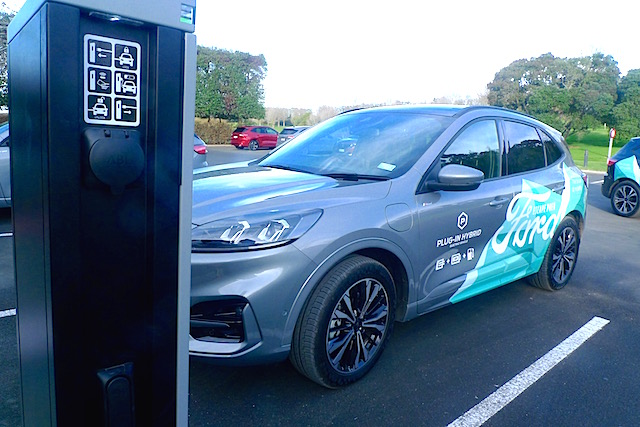
The Ford Ranger ute, New Zealand’s best selling vehicle, could cost up to $4660 more from next year under the Government’s Clean Car Import Standard.
That’s the number Ford’s boffins have come up with as they chew over the graduated effect the tailpipe emissions tax will have on the prices of the company’s fleet of cars and commercials.
Ford’s $4660 estimate is a worst-case scenario for the 4WD double-cab Ranger Wildtrak, the premium model with the 3.2-litre single-turbo diesel engine.
It starts in price at a recommended $75,490. The penalty for the engine’s C02 emissions of 233gr/km would hike the cost of the vehicle to over $80,000.
The similarly specced and priced Wildtrak with the optional 2.0-litre twin-turbo diesel, which emits 212gr/km, would be hit with an emissions tax of around $3000, based on Ford’s calculations.
The highest priced Ranger, the 2.0-litre 4WD Raptor, would also be penalised around $3000, pushing its retail price from $85,490 to $88,490.
The cheapest model with the 3.2-litre engine in the Ranger line-up would, according to Ford’s sums, be penalised $1090.
At the moment, says the company managing director Simon Rutherford, Ranger registrations are split roughly 50:50 between the 3.2-litre and 2.0-litre engines. From now on, he says, “we’ll be managing the mix towards the bi-turbo models.”
Ford, like all of New Zealand’s automotive distributors, is yet to learn from Government exactly how the emissions tax will work: how, for example, will the political masters want it paid.
Meantime, to help balance the tailpipe emissions books, Ford has landed the latest addition to its fleet of SUVs. It’s the PHEV (plug-in hybrid electric vehicle) Escape, the first of the mid-size models to offer petrol-electric motoring.
Buyers will have the choice of two – entry-level Base and (pictured above) premium ST-Line – when the first shipment of 30 arrives from Europe. Currently, there are only nine examples in the country, each in use as a demonstrator.
“We have asked for more but we haven’t got an answer back yet,” says Rutherford. “We have 90 orders (for PHEV Escape) in the system and we’ll keep topping them up as we go.”
The Base model is priced at $60,990, the better equipped St-Line at $66,990. Each qualifies for a rebate of $5750 under the Government’s taxpayer-funded scheme to grow the country’s EV fleet in an effort to cut transport emissions.
The parallel PHEV pairs a 2.5-litre four-cylinder Duratec petrol engine with an electric motor driving the front wheels only. Combined output is 167kW at 6250rpm.
The 14.4kWh battery pack can be charged on the move by the regenerative process, or via mains outlets. Charging at home with a three-point outlet, for instance, will take around six hours; charging via a Type-2 unit will take two to three hours.
The car’s range on a full charge of electricity is 59km before it switches over to hybrid operation. Overall range, with a full 45-litre tank of gas, is said to be around 750km.
There are four selectable modes – EV Auto, EV Now, EV Later, EV Charge – and five selectable drive modes – Normal, ECO, Sport, Slippery, Deep Snow/Sand.

